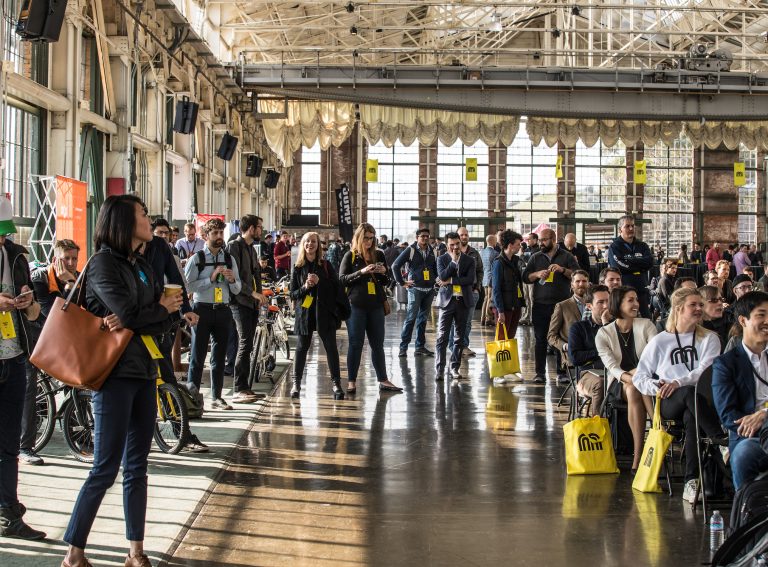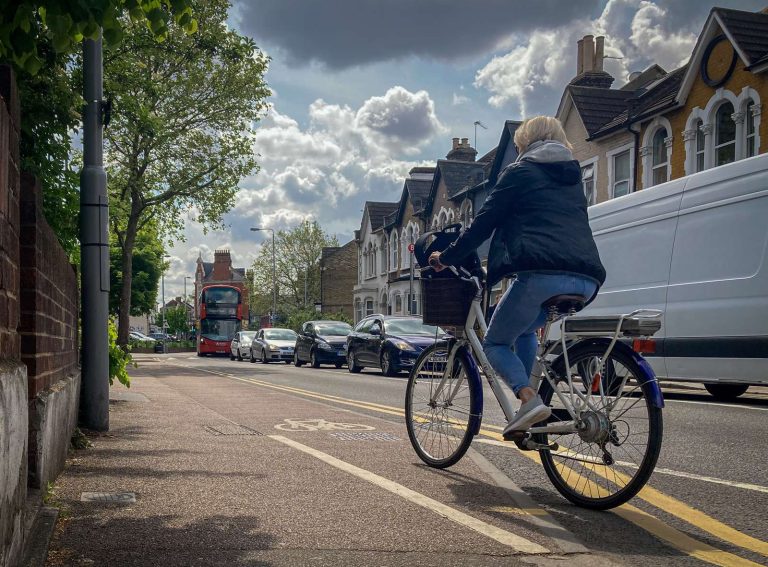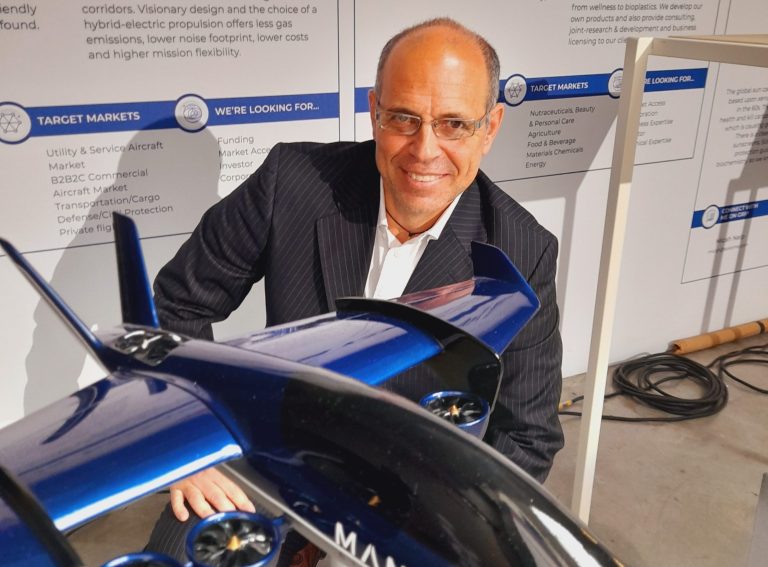Isabelle Clement is a dynamic force behind the UK’s voice for inclusive cycling.
Director of Wheels for Wellbeing, an award-winning charity that supports disabled people to cycle, Isabelle works with one mission in mind: empowering people with disabilities to reclaim the joy of movement.
Zag Daily: Can you share how your disability has impacted your mobility?
Isabelle: “I’ve been a disabled person all my life. Walking is very tedious for me and until I became a cyclist I was all about the car. I was lucky enough to get a car in my twenties with the help of my family and as far as I was concerned, if I couldn’t drive and park there then I couldn’t go. I used my wheelchair a lot which is okay for indoor environments, but it’s pretty rubbish when you’re trying to move outside on pavements. There’s nothing wrong with the wheelchair in particular – it’s the pavements that are inaccessible, and that made accessing public transport difficult too because I couldn’t take the bus or the train without having to use the pavements to get there. So as far as mobility went, I was a car driver.”
Zag Daily: Now you’re a leading voice for cycling in the UK. What changed?
Isabelle: “About twenty years ago when my son was four, he got his first bike. Before he got the bike, I used to drive to the park with him where I’d get my wheelchair out and take him around. That was fine because I’d have him on my lap and I could control his speed. But when I then took him to the park with his bike, I thought oh my god I’m going to lose him. I thought am I going to have to stop taking him to the park? Do I not bring his bike? Do I get his dad to go with him? Or maybe I change how I move around the park.
“And so I discovered a clip-on handcycle for the first time which involved attaching a hand cycling add-on to the front of my wheelchair. It gave me some proper brakes so I could go down hills faster but more controlled than using a wheelchair where I’d only have my hands. I could go up the hills because I had gears. It was very basic and it wasn’t electrically assisted at the time, but it was just brilliant. At first I saw it as a walking aid and it meant I could go on walks with my friends, but when I started getting involved with Wheels for Wellbeing I thought: why don’t I see it as a cycle?”
Zag Daily: How has cycling changed the way you can get around compared with using your wheelchair?
Isabelle: “I realised it’s a lot less scary for me to move as a disabled cyclist than as a wheelchair user. I upgraded to an electrically assisted clip-on handcycle and that made me more daring to use the roads. Since COVID, low-traffic neighbourhoods have come into force which have really improved cycling infrastructure outside of central London. My borough of Lambeth also improved its infrastructure which meant I could connect to the Cycle Superhighways and get around London with only my cycle. I used to drive to meetings in the car, get my wheelchair and handcycle out, and then cycle into the meeting because I wanted to show that I can cycle, even though I couldn’t actually cycle all the way there. But now I do, and I even take my cycle on the train too to get to wherever I need to go.
“Cycling from a train station to a meeting is far easier than using only my wheelchair to manoeuvre along cobbled pavements like in York for example. And as a woman, I found it safer to cycle than to use my wheelchair because I feel a lot less at risk of being mugged. If I can zoom along the bus lane or cycle lane, I feel safer compared with if I’m trying to manoeuvre through cracked pavements, cars parked on the sidewalks, or tree roots. Now a huge part of what I do at Wheels for Wellbeing is helping disabled people realise that, while cycling can’t magic away our struggles, it can do a lot to mitigate and really help transform our mobility.”
Zag Daily: Can you tell me more about the work of Wheels for Wellbeing?
Isabelle: “Wheels for Wellbeing was originally created for local disabled people in South London to discover that cycling was possible for them, and we saw ourselves as a practical provider of cycling opportunities for disabled people. We work with hundreds of disabled people in our three localities in South London and run inclusive cycling hubs. We have over 300 cycles and 100 different kinds to help disabled people cycle to their hearts content during our sessions. It’s an opportunity to feel the wind in your hair and experience the endorphins that come with moving, when mobility for disabled people can otherwise be so laboured and difficult.
“But we realised that this work wasn’t enough. It was doing a lot to change the experience of disabled people and how they move, but it wasn’t doing enough to shift the dial in general. It didn’t bring change for society, because it was an out of sight, out of mind topic. We realised that there were plenty of disabled people who cycle out there who didn’t need the practical support of an organisation like Wheels for Wellbeing. And there were plenty more disabled people who, whether or not they’d discovered cycling, just didn’t see it as a day-to-day activity because maybe the kit was too expensive, or they have nowhere to park their cycle, or the infrastructure is inaccessible. It’s not enough to encourage disabled people to cycle and we need to understand what the barriers are and how to remove them. There was plenty of investment going into cycling at the time – this was when the then Mayor of London Boris Johnson was leading a big push on cycling. But without having the voice of disabled cyclists at the table, there was a danger that this infrastructure was going to be transformed but it might exclude disabled cyclists entirely. So we’re a South London organisation for the practical opportunities that we provide, but we’re a national voice across the UK for inclusion in cycling and an international voice as a member of the European Cyclists’ Federation too.”
Zag Daily: As a national UK voice, how is Wheels for Wellbeing influencing policy?
Isabelle: “We’re working closely with Active Travel England and the Department for Transport. In the last few weeks, we set out our policy asks to Simon Lightwood, the Minister for Active Travel, at a Ministerial roundtable. These requests include explicitly including Disabled people, as defined in the Equality Act 2010, as users of micromobility devices, and ending the regulation of mobility aids as “invalid carriages”. It also asks for all Low-speed Zero Emission Vehicles (LZEV’s) and ‘traditional’ mobility aids to be allowed to use cycle lanes, re-named as “mobility lanes”.
“Before the new government came in, one of the big wins for Wheels for Wellbeing was influencing the contents of the cycling infrastructure guidance – the LTN 1/20. Accessibility is now at the heart of cycling infrastructure guidance which is a huge change. Now, it needs to be implemented and enforced. If we want change, we need to influence the politicians themselves because they’re human beings and they need to care about the topic. Louise Haigh, who we’ve established contact with, has said she’s passionate about active travel, so we’re hoping to support that in very tangible ways.”
Zag Daily: The UK government recently announced a £100 million investment into active travel. How should this funding consider accessibility?
Isabelle: “The investment will be going through various funding bodies and a lot of the decisions will rest on local authorities. The guidance is there and now it’s about making sure policymakers’ feet are held to the fire when using the funding for active travel, and repeating the mantra that it’s not good enough to put cycling infrastructure and schemes in place if they’re not being delivered in an accessible way.
“The whole cycling ecosystem needs to think differently about listening to the voice of disabled cyclists. People might ‘um and ah’ and say that our requests are for a minority, but I don’t think they realise that once you start listening to the voice of those who are most excluded from cycling and from transport in general then you realise just how badly you’ve been designing it. And once the infrastructure is accessible to disabled people, it becomes accessible to everyone. Like parents for example who are more likely to ride a cargo bike and who have exactly the same vehicle dimensions as a disabled cyclist’s trike, and who face the same limitations like being unable to fit through bollards or narrow cycle lanes.”
Zag Daily: How should government funding serve disabled cyclists other than via infrastructure?
Isabelle: “Firstly, by addressing the cost of the cycles that disabled people need. My clip-on handcycle costs over five grand which is more than what a lot of people pay for their second-hand car. There are cycle-to-work schemes, cycle loan schemes and try before you buy arrangements, but are they providing the service accessibly? Are they making non-standard cycles available on their schemes? Generally not. That’s one area we’re working on with Sustrans and Peddle my Wheels.
“Another area is subsidies. Where are the subsidies for non-standard cycles? Far more disabled people are not in work compared with non-disabled people so even the cycle-to-work schemes, which are a great thing, aren’t accessible to a lot of disabled people. There are many interventions needed to encourage a change of behaviour. The overall argument we need to make is to consider accessibility by default, not as an add-on. It’s not an extra headache or more expensive thing that only serves disabled people – it makes cycling accessible for your whole population. Ultimately we want everybody to use active modes of transport and there’s plenty of people who don’t have a car or don’t want to drive. You don’t have to be disabled for that. More people will make healthier and cheaper choices if the active travel environment has been provided accessibly. So we’re not asking for special treatment. We’re asking for what makes sense, one, within the law and, two, economically. This is about unleashing the power of cycling for everyone. Because, the vast majority of this country’s population do not cycle for similar, if not all, the same reasons as many disabled people.”
Zag Daily: Who is one woman in the new mobility industry that inspires you?
Isabelle: “Professor Rachel Aldred. Rachel has been for many years at the forefront of innovative Active Travel research, through her own research and her direction of the Active Travel Academy. She gives much of her own time to ensuring that traditionally silent voices in the transport debate are empowered to be heard.”





